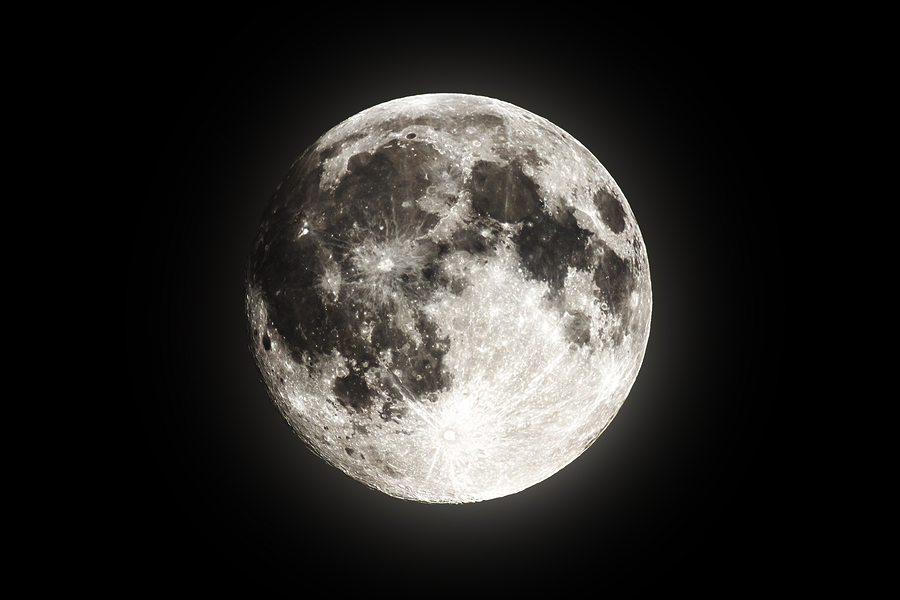The Moon
The Moon moderates the Earth’s wobble on its axis, which helps stabilize the Earth’s climate and create the tidal pattern of the oceans. The Moon is a natural satellite, and the leading theory is the Moon formed from the debris from a collision between a Mars-sized impactor and the Earth.

Source: BigStock
Here are some informational statistics about the Moon:
- Maximum Temperature: 253°F
- Minimum Temperature: -387°F
- Radius: 1,079.6 miles (approximately ⅓ the size of Earth)
- Distance from the Earth: 239,000 miles
- Composition: as a core, mantle, and crust
- The Moon makes an orbit around the Earth every 27 days, however, because the Moon rotates on its axis at the same rate as the Earth, it appears to take 29 days.
- The synchronous rotation means that the same hemisphere of the Moon faces the Earth all of the time.
- The Moon’s orbit around the Earth is tilted compared to the Earth’s orbit around the Sun. This means that the Moon can still receive light from the Sun even when it is behind the Earth.
- The perceived “phases of the moon” are based on the hemispheres of the Moon are illuminated at different times.
- Full Moon - the hemisphere facing the Earth is fully illuminated
- New Moon - occurs when the far side of the moon has the full sunlight, and the hemisphere facing the Earth is experiencing its night